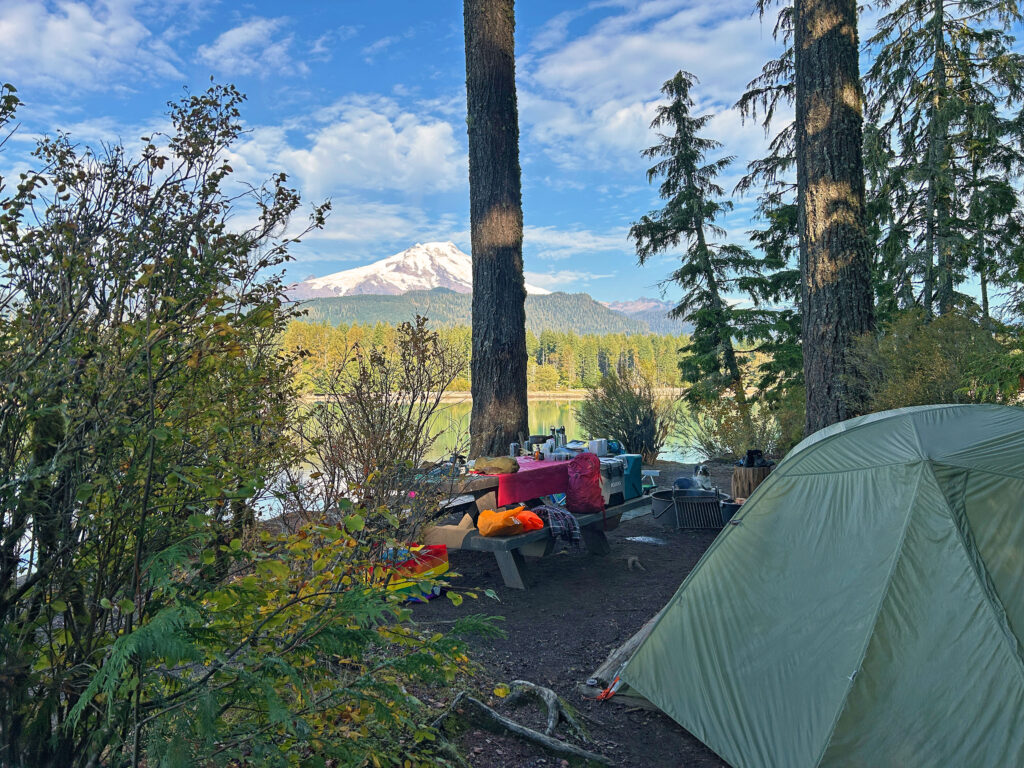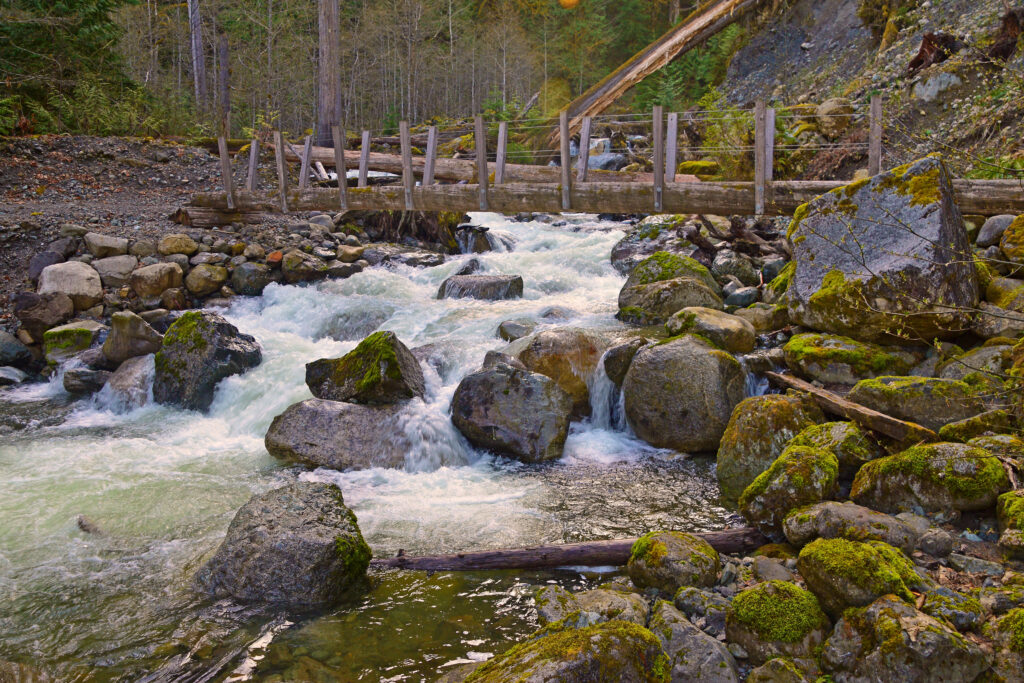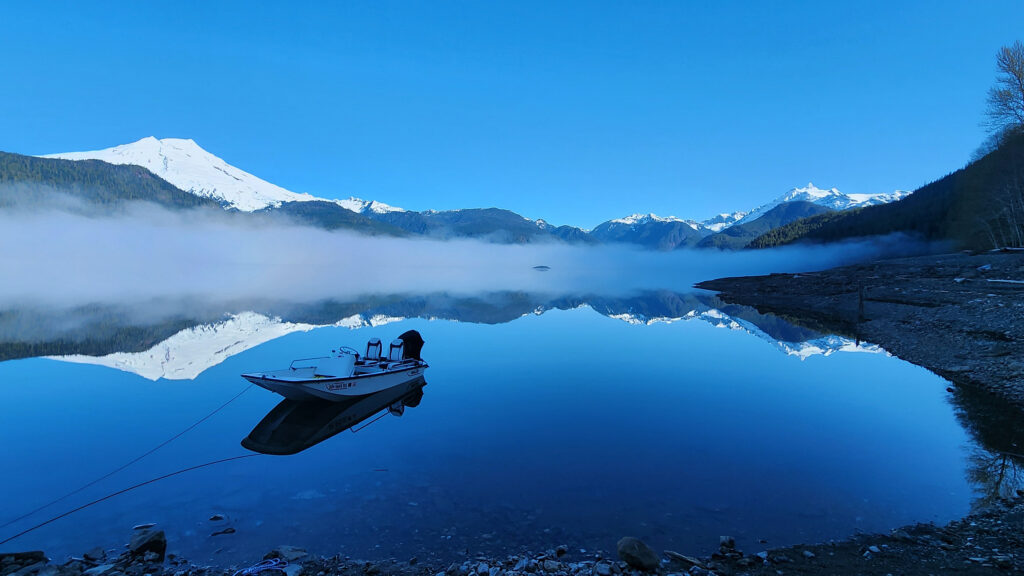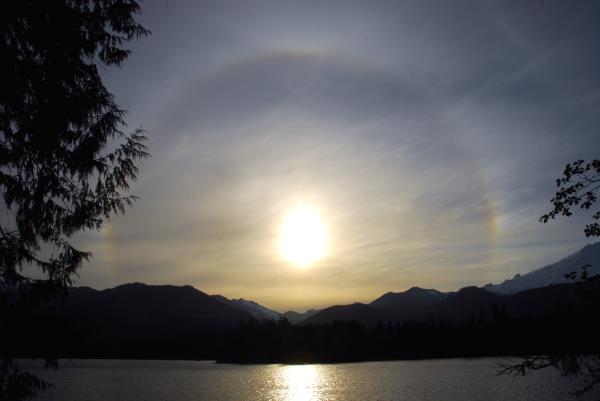When we moved to Washington more than 21 years ago, beautiful Baker Lake was among our first weekend destinations. Since then, we’ve lost count of how many times we’ve returned — to hike, camp, kayak, fish, or simply float in the quiet beauty of the North Cascades.
Tucked between Mount Baker and Mount Shuksan, Baker Lake offers a postcard view in nearly every direction. Its 4,800 acres are fed by the Baker River and numerous creeks, held behind a hydroelectric dam whose narrow top road leads to the trails and backcountry camps on the lake’s eastern side.
At only 705 feet in elevation, the lake and its main trail stay mostly snow-free year-round, while the surrounding peaks keep their white crowns well into summer. We’ve skied in July, kayaked in January, and hiked every month of the year — though I’ll admit, camping in December’s rain is less than ideal.
Camping Around the Lake
Most of the camping at Baker Lake lies within U.S. Forest Service land. There are eight drive-in campgrounds on the west side of the lake — great for RVs and those who enjoy their creature comforts (like watching TVs from a reclining camp chair).
We usually prefer the east-side backcountry campsites, reachable only by foot or boat. They’re rustic but well equipped, with picnic tables, firepits, and bear boxes — the kind for storing food, not bears. One site even has an outhouse; the others feature open-air “toilets” discreetly tucked into the woods.

On one trip, I learned that bears sometimes test those bear boxes to see if campers closed them properly. Another year, the entire east side of the lake was closed due to a particularly stubborn mountain lion that refused to yield the trail. It’s all part of the adventure.
For those preferring easier access, Puget Sound Energy manages Kulshan Campground, a first-come, first-served site near the dam with 108 spots for tents and RVs, running water, and a boat ramp.
Baker Lake Trail and Other Hikes
The Baker Lake Trail stretches 14.5 scenic miles along the lake’s east side, weaving through towering cedar and fir forests and crossing numerous cascading creeks — the kind that gave the Cascade Mountains their name. The trail offers glimpses of both Baker and Shuksan, as well as access to four beautiful backcountry campgrounds, making it one of the easiest year-round backpacking options in the North Cascades.
The first campground, Anderson Point, is less than two miles from the southern trailhead. However, the Anderson Creek crossing can be tricky. Seasonal floods often wash away the log bridge, leaving hikers to wade, balance, or rock-hop their way across. When I hiked there last November, the ice-coated rocks turned me back — as they did several others that day. Always check current trail conditions before heading out.

On another winter hike, Mary and I reached Maple Grove Campground, about four miles in. The lake level was unusually low, so we walked the shoreline back among ancient tree stumps, sunshine glinting off the water.
Over the years, we’ve explored many other trails nearby — Railroad Grade (Easton Glacier Route), Park Butte, Anderson Lakes, and the Baker River Trail — each offering its own perspective of this glaciated landscape.
Fishing and Wildlife
Believe it or not, Puget Sound Energy operates a “fish taxi,” transporting sockeye salmon around their two dams on the Baker River. In 2025, they recorded a new return of 92,000 fish — an impressive success for a modern fishery.
Along with sockeye, the lake also holds kokanee, bull trout, rainbow trout, and whitefish. And if you’re lucky, you might spot bald eagles, otters, or even the occasional black bear wandering the shoreline.

Nature’s Solitude and Subtle Magic
Despite its popularity, Baker Lake still offers plenty of quiet corners to relax and reflect. You can sit along the shore and watch the alpenglow light up Mount Shuksan, listen to creeks tumbling down mossy slopes, or simply let the gentle waves lap at the rocks.
One evening, Mary and I sat meditating by the water, listening to that soft rhythm. She silently asked for a sign that someone was listening — and when we opened our eyes, a brilliant sundog shimmered high in the sky. It was one of those small, perfect moments that keep us coming back.

Conclusion
Whether you’re camping beneath the stars, paddling across glassy water, or hiking through ancient cedar forests, Baker Lake captures the best of the North Cascades — wild, peaceful, and full of quiet surprises. For us, it’s been a place to return to again and again — and it never feels the same twice.

